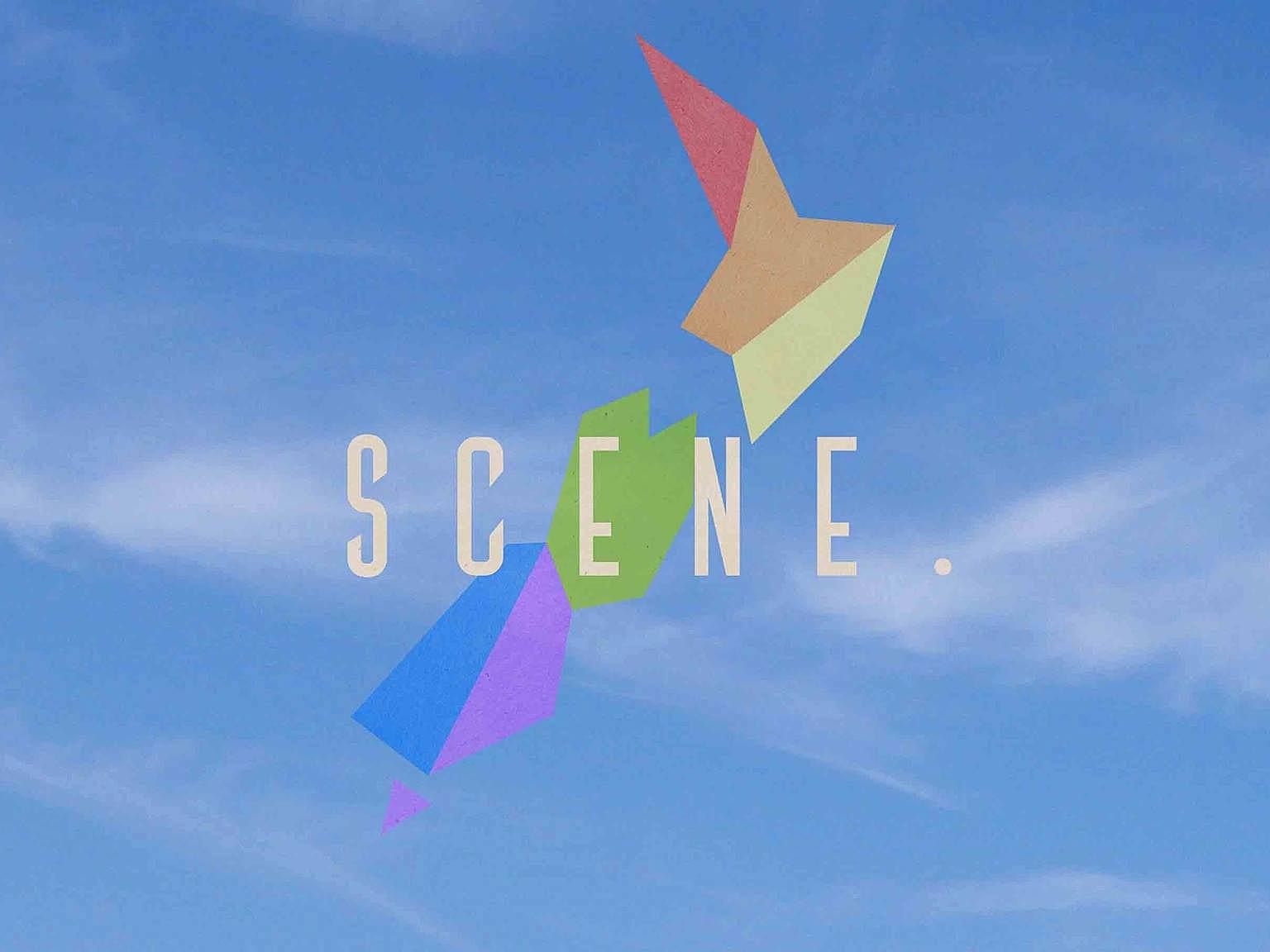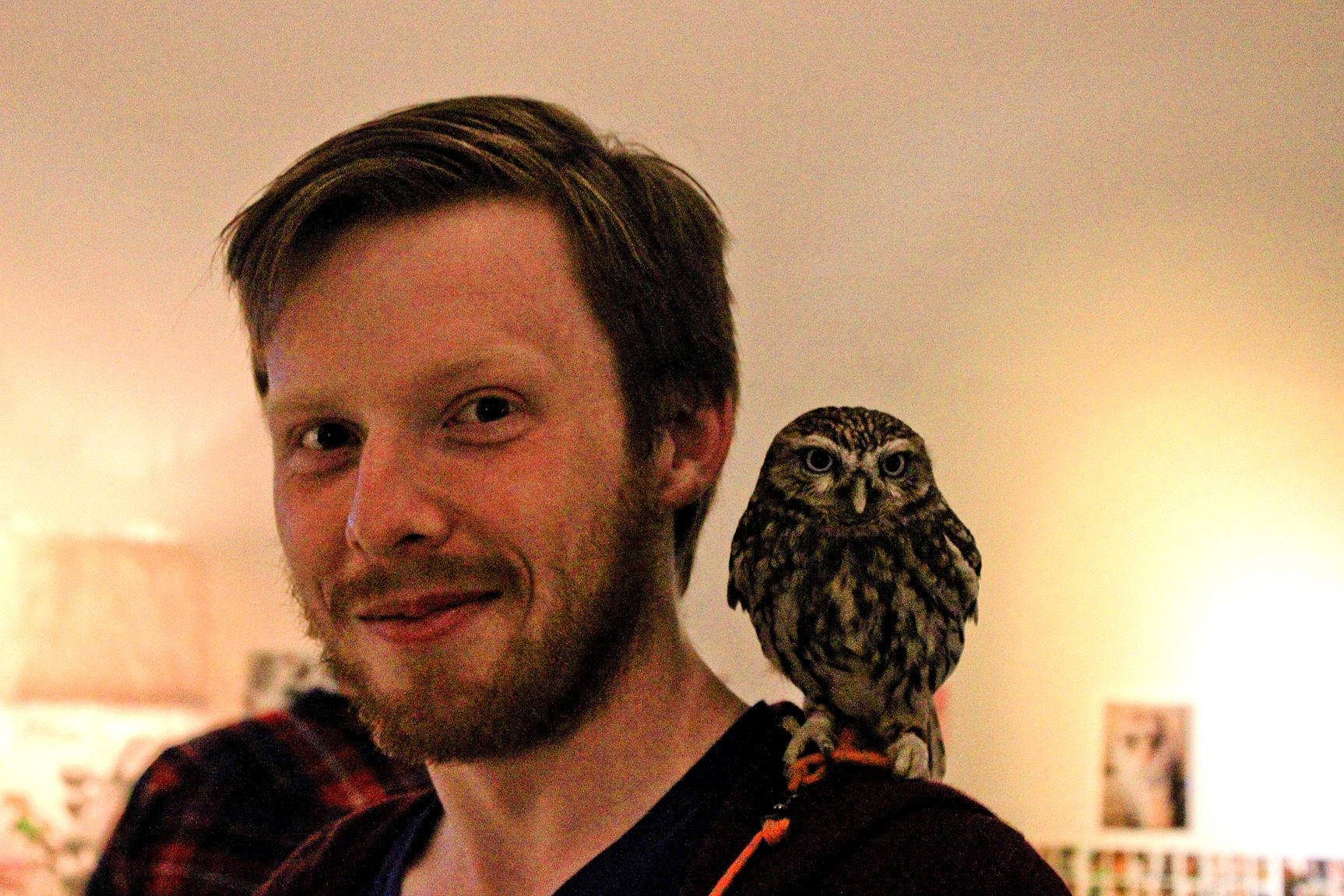Review: Scene
Adam Goodall reviews LGBT documentary theatre piece Scene.
Keegan Carr Fransch plays Tabby, and Tabby is telling us about a young gay person she met in the South Island. They live on a farm, and Tabby asks them about their experiences in rural New Zealand. There can’t be many people in the vicinity who share their experiences, so what kind of communities are they are part of? Have they gone online? They tell her they haven’t –dial-up kind of gets in the way of signing up for a Tumblr account.
Jess Green is playing herself, interviewing Tabby, and she interrupts Tabby here. “Dude, that’s the modern tragedy,” she says. “Queer person. Rural place. Dial-up internet.” The audience cracks up.
It’s a really good joke, paraphrasing Tabby’s punchline in a sharp and empathetic way. But it pulls focus from Tabby – and even though Jess has the final word in that excerpt, I notice it pull Tabby’s focus, away from us and over to Jess. I notice this because it’s not something that happens often in Scene, and when it does happen, I don’t have an easy explanation for why it’s happening. Which is a question I keep coming back to: Why is Scene telling its stories in this way? Why is it happening like this?
Scene is the second full-length verbatim production directed by Jess Green, following her death-focussed Dunedin debut Caedmon’s Hymn. Scene takes a classical approach to headphone-verbatim, with Green and six actors reenacting interviews with thirteen different New Zealanders who are part of the LGBQT community. As all of the interviews appear to have been conducted while sitting down, the stage is simple and uncluttered. There are a couple of couches and a handful of chairs centre stage, arranged in a semicircle; hanging at the back, two floor-to-ceiling rainbow banners, a welcome burst of colour.
The interviews, conducted and curated by Green, Alayne Dick and Daniel Goodwin, are stacked with valuable anecdotes and insights. Green, Dick and Goodwin have gone to great lengths to capture a wide range of voices and do them justice, and their script is sensitive to each voice and its importance to the landscape as a whole. Young people who have only recently come out are given the same platform as politicians and activists, and those with a near-encyclopaedic knowledge of modern LGBQT vocab aren’t privileged above those who came up through different environments with different frames of reference. Scene delivers a breadth of voices and experiences, directly challenging the idea that society can ascribe any one ‘narrative’ to the ‘LGBQT community’.
Like most documentary theatre, then, Scene is at its most interesting and estimable when those voices and experiences overlap, interact, contradict and challenge each other. For example, late in the show, Bruce – an older gay man who was on the protest lines for the Homosexual Law Reform Act – talks about how he feels that it’s the younger generation’s turn to step up and fight for the next wave of social advancement. Shortly after, former Labour MP Georgina Beyer confronts this idea: “I can’t just’ve done what I’ve done, revel in the glory, and then bugger off. It’s incumbent upon me and many others like me now to be there for our younger generation coming through.” Both moments are unassuming on their own, expressions of philosophies formed and won on a difficult turf; against each other, though, they provoke interesting questions about the obligations of older activists to the people succeeding them and vice versa.
More effective, and more present, is the way Scene wrestles with labels: the strengths, and the limitations, of a vocabulary that’s fundamentally tied to recognising the basic humanity of individual people. The liberating and empowering aspects of an identity-based vocabulary are powerfully captured in individual anecdotes. Scene effectively captures their evolution over time, too: 72-year-old Morrigan talks about a “rush towards feminism” in the 1970s and 1980s, coming to “race, and class, and difference” through conferences and discussion; following that, “agender trans asexual aromantic” Kerry explains the basics of their identity, the nuances of aromanticism and the ethics of ‘passing while trans’ with a voice that’s both eloquent and accessible, an effective 101 on these subjects that’s also open about the personal element underpinning them.
At its core, though, Scene probes the tension between ‘shared narratives’ and the plurality of experiences that is the community’s reality. In one interview, Rainbow Youth employees talk about trying to work out which of the kids they teach are part of “the Family”; in another, a trans man talks about the very specific complications of transitioning when a singer, carefully articulating his fear of losing his coveted spot in a choir if he transitions due to the inevitable dropping of his voice.
The six actors – the aforementioned Keagan Carr Fransch and Alayne Dick perform alongside Alex Rabina, Ashley Holden, Kelly Moen and Oliver Probert – recreate their subjects with varying levels of nuance and good humour. The performances can feel studied, replicas of honest moments rather than honest moments themselves; more often than not, though, the actors are relaxed and naturalistic, catching the familiar rise and fall of loosely-directed close-quarters conversation. Fransch is particularly good at this: all three of her characters are fast talkers, but she has a canny feel for how their energies diverge. Tabby is enthusiastic about her activism, bundled up in herself like a ball of positive energy; Morrigan is slightly slower for her age and more open in her movements; and Kiran, a non-binary trans person interviewed with their queer flatmate Jennifer, asserts their opinions with real purpose, hunched over as they hold court.
Green’s made a number of decisions that narrow our focus to these people when they talk, nothing and no-one else. We identify the interviewees by the space they occupy on the stage as much as anything else. They never move from the seat they’re in when we’re introduced and the lighting cuts tight, bright rectangles around them. Meanwhile, idling actors focus their attention on the person talking until it’s their turn, and the omnipresent Jess does the same. But when the actors hit play on their iPods and slip into their roles, their focus drifts. Sometimes they speak directly to the audience; other times they gaze into the middle distance, above everyone’s heads, or they deliver their lines to the floor, or they focus their attention on Jess. The actors, unlike the audience, don’t have a uniform place of focus.
This brings me back to that question: Why is it happening like this? Like Caedmon’s Hymn before it, Scene has an amiable, conversational energy. That casual approach worked for Caedmon’s Hymn, though, because of its subject matter and because of its aesthetic. Staged in a crypt, the cast wearing dark colours and bolted to their chairs, Caedmon’s Hymn presented a lot of people talking about death in the abstract. The low-key energy made sense because of that abstraction, and it made the show more effective when the energy shifted and the abstract gave way to the personal. It’s less appropriate to Scene, which rarely shifts out of second gear even as it grapples with deeply-felt experiences and fiercely political viewpoints. Georgina and Adrian and Gabriel are all saying things that communicate passion and anger and melancholy and righteousness, but most everything comes across temperate.
That’s partly a quirk of headphone-verbatim – as I wrote in my review of Two Mortals earlier this year, messing with anything in a verbatim performance runs the risk of decontextualising the interviews and robbing them of their power. It’s entirely likely that all the interviews were personable, unthreatening and moderately-pitched, and wanting to maintain the feeling of mutual conversation is an important goal in its own right.
However, Scene could lean further into this; it could move further away from the conservative staging choices that exacerbate its issues. The utilitarian set design limits the opportunities available to define the interviewees through the ways that they occupy the space, and the soft colour palette dulls them when they should be vibrant and alive (having Ashley Holden try to recreate Georgina Beyer while wearing all-grey is a good example of this). Further, casually-paced five-to-ten-second transitions regularly happen between interviews rather than during them, making it harder for Scene to establish and maintain a comfortable flow.
Then there’s the lack of uniform focal point for the actors. When the actors engage the audience directly, the material comes alive because it’s a story we’re being let into: Alex Rabina uses this particularly effectively when retelling Adrian’s story of coming out to his parents as a trans man, reeling us into Adrian’s anxiety by sharing it with us. This is one of a number of moments that drive home why Scene needs to exist as theatre. But we lose it when the actors are looking into the middle distance, or when Jess jumps in.
That’s a problem because there’s a lot of material to digest in this 90 minute show. The material often contradicts and compliments itself in fascinating and complex ways, but too often the audience is left to dig that out for themselves, and it’s harder to do that when we’re being reminded of the distance between us and the interviewees. Green, Dick and Goodwin’s curation actively pushes against the idea that the LGBQT community lives the kinds of stock narratives society tries to impose on it, and it’s wonderful for that. It could do more to actively highlight shared experiences or common truths within its plurality of voices, though; by honing its structure and, perhaps, by being a bit more judicious with what it presents, the curating team could better highlight both the universality and the diversity of the stories they’ve given a platform.
Ultimately, Scene is a valuable document of a time and place in the ‘scene’, and given time it could be an important one. However, at this stage in its development it’s not clear that Scene knows what kind of document it wants to be. But that’s something it’ll find with time; for now, it’s functional, matter-of-fact, and, occasionally, very very powerful.
Scene runs at
BATs Theatre from September 15 - 19
For tickets and more information, go here.

